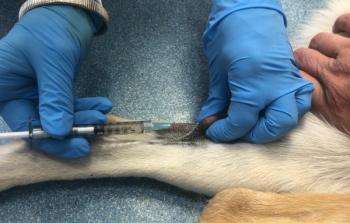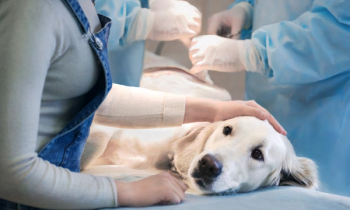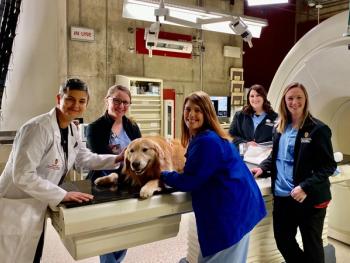
Check out this week's news.

Check out this week's news.

A sneak peek at this week’s headlines.

Laverdia-CA1 provides an additional treatment option for dogs suffering from this devastating illness.

A renowned veterinary oncologist outlines the current knowledge about this cancer of the blood vessel walls, from presentation to prognosis.

Cancer diagnostics and therapeutics continue to evolve, potentially lessening the associated invasiveness, duration, and cost.

These 1-hour events will address a wide array of veterinary topics including owner compliance, pet insurance, oncology, and telemedicine.

The simple blood test employs technology that looks for very early nucleosomic markers of cancer in dogs.

A little sneak peek at this week’ headlines.

When veterinarians and veterinary teams work as a cohesive team, workflow is smoother and patient and client care improves.

Early detection of disease is key to maximizing an older dog’s quality of life. Teaching owners about common ailments can help these ptients get appropriate treatment sooner rather than later.

You’ve just made a cancer diagnosis and offered an oncology referral to the owner, but they won’t go. Now what?

On this episode of The Vet Blast Podcast, Dr. Adam Christman talks with veterinary oncologist Chand Khanna, DVM, PhD, about how technology has improved 3-way communication between veterinarians, oncology specialists, and clients.

An uncommon but life-saving surgery gave a Labrador retriever and his grateful owner much more time together.

Genomic based-precision medicine from the TGen subsidiary provides additional resources to assist both veterinary oncologists and pet owners in the diagnostics and treatment of canine cancer.

Under new ownership and leadership, the company reasserts its mission of providing affordable, innovative therapies for canine joint disease and cancer.

Top headlines of the week: State VMAs endorse Feline Fix by Five Months, rabies update, drug DISCO, and The Vet Blast Podcast with guest Steve Dale.

A look at the One Health initiative that is stepping beyond science to generate more treatments more quickly for canine and human cancer.

Immunotherapy — using an individual’s own immune system to fight disease — is one of the fastest-growing areas in both human and veterinary research. Here’s the latest.

Apocrine gland anal sac adenocarcinoma is an aggressive cancer that might be better harnessed with targeted chemotherapeutic agents. A recent study evaluated the efficacy of toceranib in treating this tumor, and assessed prognostic factors.

WeatherTech’s Super Bowl ad compels Petco’s CEO to help fund further cancer research at the school.

The former pharmaceutical company executive promised to restore the health of terminally ill dogs and allegedly bilked pet owners of hundreds of thousands of dollars.

A very grateful pet owner has created a Super Bowl ad to thank—in a huge way—the veterinary school that saved his dog’s life.

Maybe your state doesn’t enforce hazardous drug compounding rules today, but you never know when that might change. And the rules of USP <800> protect your veterinary hospital’s patients and staff as well as the environment. Learn more and consider whether your protocols and areas could use a redesign.

Experts share their experience and expertise on what we know about cannabidiol use in dogs and cats.

The American opioid epidemic continues, and as new, non-narcotic analgesics are developed, we owe it to pets (and people!) suffering from cancer to manage and relieve acute and chronic pain. But perhaps also, argues Dr. Mike Nolan, because some studies show a connection between pain relief and the behavior of tumors in a manner that improves survivorship.